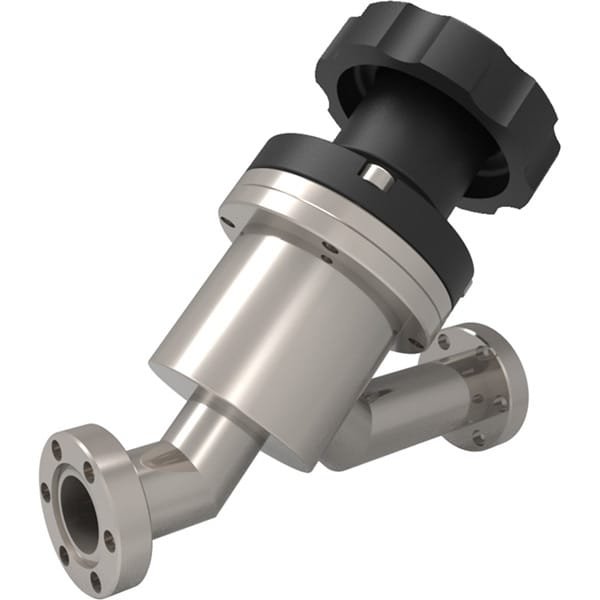Inline valves are critical components in fluid control systems, designed to regulate, redirect, or halt the flow of liquids, gases, or other substances within a pipeline. Unlike other types of valves that might require specific installation setups, inline valves are installed directly into the pipeline, ensuring seamless integration. This design minimizes flow disruption, improves efficiency, and provides a streamlined solution for fluid control.
These valves function by using mechanisms such as discs, gates, balls, or diaphragms to control the movement of the fluid. They can be manually operated or automated through electric, hydraulic, or pneumatic actuators. Positioned directly within the pipeline, inline valves optimize flow efficiency while maintaining system integrity.
Types of Inline Valves
Inline valves come in several varieties, each tailored for specific operational needs and applications. Ball valves feature a rotating sphere with a hole that aligns with the pipeline to allow or block flow. Gate valves operate with a sliding gate to stop or permit fluid movement and are ideal for full-flow applications. Butterfly valves use a rotating disc for flow control and are known for their lightweight design and cost-effectiveness. Globe valves offer precise control of fluid flow through a movable plug and seat, making them ideal for throttling. Check valves ensure one-directional flow to prevent backflow, while diaphragm valves utilize a flexible membrane to regulate fluid, often used in industries requiring high hygiene standards.
Key Features of Inline Valves
Inline valves possess several defining features. Their compact design allows for easy installation in space-limited systems. They are available in materials like stainless steel, bronze, and PVC, making them versatile for handling various fluids, including corrosive substances and high-pressure liquids. The inline configuration ensures smooth integration into existing pipelines without significant modifications. Built for durability, these valves can withstand extreme temperatures, pressures, and corrosive environments, ensuring longevity and reliability.
Applications of Inline Valves
Inline valves are widely used across industries due to their versatility and effectiveness. In the oil and gas industry, these valves manage the flow of crude oil, natural gas, and other hydrocarbons in refineries and pipelines. Water treatment plants rely on them to regulate water and chemical flow during purification processes. Pharmaceutical manufacturing employs diaphragm inline valves to maintain sterile conditions while handling sensitive fluids. Chemical processing facilities use inline valves to control the movement of hazardous and corrosive chemicals. HVAC systems depend on these valves for efficient water and refrigerant flow management.
Advantages of Inline Valves
Inline valves offer several benefits. Their compact size saves space and simplifies installation in confined areas. Maintenance is straightforward, with designs that allow for easy inspection, cleaning, and part replacement. They provide consistent and reliable performance, ensuring uninterrupted system operation. Additionally, their durability and low maintenance requirements contribute to cost efficiency over their operational lifespan.
Factors to Consider When Choosing an Inline Valve
When selecting an inline valve, it is essential to consider several factors. The material must be compatible with the fluid it will handle to avoid corrosion or wear. The valve’s pressure and temperature ratings should match the system’s operating conditions. Flow requirements play a key role; some valves, like globe valves, are suitable for precise control, while others, like gate valves, excel in full-flow scenarios. The method of actuation—manual or automated—should align with the system’s operational demands. Finally, maintenance needs should be evaluated, considering the valve’s location and ease of access.
Future Trends and Innovations in Inline Valves
Inline valves are evolving with advancements in technology and materials. Smart valve technology integrates IoT-enabled sensors for real-time monitoring, providing data on flow rates, pressure, and temperature to improve efficiency and enable predictive maintenance. Manufacturers are increasingly using sustainable materials to enhance the environmental friendliness of inline valves. Innovations in material science are leading to valves with improved resistance to wear and corrosion, extending their lifespan and reliability in demanding applications.
Conclusion
Inline valves are indispensable in fluid control systems, offering a blend of efficiency, durability, and ease of use. Their seamless integration into pipelines and diverse functionalities make them vital across industries ranging from oil and gas to pharmaceuticals and water treatment. Understanding their types, features, and applications can help in selecting the right valve for any system. As technological advancements continue, inline valves are set to become even more efficient, durable, and versatile, ensuring their place in the future of fluid control systems.



